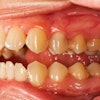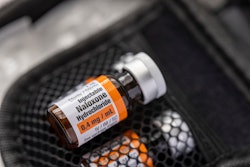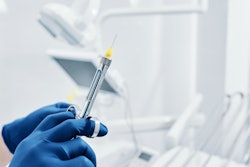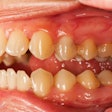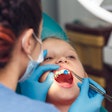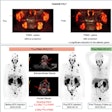Last year in my dental practice, I met Sarah, a 42-year-old with severe trismus and facial swelling that had persisted despite a week on amoxicillin. The infection had spread to her submandibular space. With limited options and worsening symptoms, I consulted the MedAssent DDS Digital Drug Handbook and prescribed the quinolone antibiotic ciprofloxacin -- a decision that resolved her infection but introduced me to both the power and perils of quinolone antibiotics.
This class of medications exists in a unique space in dentistry: extraordinarily effective yet increasingly scrutinized. As dental professionals, understanding when these potent antibiotics should -- and shouldn't -- be deployed can dramatically impact patient outcomes.
Beyond the basics: Understanding quinolones' molecular magic
 Dr. Lisa Chan.
Dr. Lisa Chan.
Quinolones are synthetic antibiotics that perform bacterial cellular “sabotage” at the DNA level. Unlike cell wall inhibitors like penicillins, quinolones target bacterial DNA gyrase and topoisomerase IV, enzymes that are essential for DNA replication. By binding to these enzymes, quinolones prevent the supercoiling and separation of bacterial DNA strands, effectively halting replication and leading to cell death.
The addition of a fluorine atom to the quinolone structure created fluoroquinolones, dramatically enhancing their spectrum and potency. This molecular modification allows better tissue penetration and increased bioavailability, making them particularly effective against deep-seated infections that might evade other antibiotics.
The quinolone arsenal: 5 weapons for dental battle
Ciprofloxacin: The reliable veteran
Spectrum profile: Its activity extends to many gram-positive organisms, though it's not the first choice for Streptococci that dominate many dental infections.
Dental application: Reserve for severe odontogenic infections with suspected gram-negative involvement, particularly when penicillins and macrolides have failed or can't be used.
Dosing strategy: 500 mg orally twice daily for seven to 10 days (shorter durations increasingly preferred).
Clinical pearl: Ciprofloxacin penetrates bone effectively, making it valuable for osteomyelitis of the jaw when combined with surgical intervention.
Levofloxacin: The balanced contender
Spectrum profile: Enhanced activity against respiratory pathogens and improved gram-positive coverage compared to ciprofloxacin.
Dental application: Excellent for complex facial space infections, particularly when mixed aerobic and gram-positive bacteria are suspected.
Dosing strategy: 500 mg once daily for seven to 10 days, with convenient dosing improving compliance.
Clinical pearl: The once-daily dosing regimen can significantly improve adherence, which is particularly important when treating infections that might otherwise lead to hospitalization.
Moxifloxacin: The anaerobic specialist
Spectrum profile: Superior coverage of anaerobic bacteria compared to other quinolones -- a significant advantage for dental infections that frequently involve anaerobes.
Dental application: Particularly valuable for aggressive periodontitis, deep fascial space infections, and necrotizing ulcerative gingivitis resistant to conventional therapy.
Dosing strategy: 400 mg once daily for seven to 10 days.
Clinical pearl: Consider moxifloxacin when treating infections in patients with compromised immune systems where anaerobic coverage is crucial.
Ofloxacin: The niche player
Spectrum profile: Moderate activity against both gram-positive and gram-negative bacteria, though generally superseded by newer agents.
Dental application: Rarely the first choice but useful for patients who cannot tolerate other quinolones due to specific side effect profiles.
Dosing strategy: 400 mg twice daily for seven to 10 days, depending on the treatment.
Clinical pearl: The optical isomer of ofloxacin, levofloxacin, generally provides better coverage with fewer side effects, making pure ofloxacin less commonly used.
Delafloxacin: The MRSA specialist
Spectrum profile: Notable for activity against methicillin-resistant Staphylococcus aureus (MRSA), which can occasionally complicate orofacial infections.
Dental application: Consider for serious infections potentially involving resistant staphylococci, particularly in healthcare-associated settings.
Dosing strategy: 450 mg twice daily for seven to 10 days.
Clinical pearl: The unique chemical structure of delafloxacin allows it to remain active in both acidic and neutral environments, potentially valuable in the variable pH of abscess cavities.
Warning signs: Recognizing the risks
While quinolones offer powerful antimicrobial effects, their potential adverse events warrant caution:
Tendon toxicity
Fluoroquinolones carry a black box warning regarding tendinopathy and tendon rupture. The risk increases in:
- Patients over 60
- Those taking concurrent corticosteroid therapy
- People with a history of kidney, heart, or lung transplantation
- Individuals with previous tendon disorders
The Achilles tendon is most commonly affected, but any tendon can be involved. Importantly, symptoms can develop during therapy or even months after discontinuation.
Cardiac considerations
Several fluoroquinolones (particularly moxifloxacin) can prolong the QT interval, potentially triggering life-threatening arrhythmias. Exercise extreme caution in patients with:
- Congenital long QT syndrome
- Uncorrected electrolyte abnormalities
- Concurrent QT-prolonging medications
- A history of cardiac arrhythmias
Neurological nuances
Quinolones can cross the blood-brain barrier, occasionally causing:
- Dizziness
- Headache
- Insomnia
- Altered mental status
- Rarely, seizures
These effects can be particularly problematic in elderly patients or those with central nervous system (CNS) disorders.
Clinical decision-making: When to deploy your quinolone weapon
The decision to prescribe a quinolone shouldn't be taken lightly. Consider these scenarios where quinolones may be appropriate in dental practice:
1. Failed first-line therapy
When standard therapies (penicillins such as amoxicillin or augmentin, cephalosporins, or the macrolide azithromycin) haven't resolved the infection after 48 to 72 hours, quinolones offer an alternative mechanism of action that may overcome resistance.
2. A complex allergic patient
For patients with documented severe allergies to beta-lactams and alternative agents, quinolones provide a valuable option with broad-spectrum coverage.
3. Severe spreading infection
In rapidly progressing infections involving fascial spaces where mixed aerobic and anaerobic flora are likely culprits, moxifloxacin, in particular, can provide critical coverage while cultures are pending.
4. An immunocompromised host
Patients with compromised immunity may harbor unusual or resistant pathogens that respond to quinolones when conventional therapies fail.
Practical implementation: The quinolone prescription checklist
Before writing that quinolone prescription, methodically assess the following:
- Necessity: Have first-line options been tried or ruled out?
- Allergies: Document any previous adverse reactions to antibiotics.
- Medication review: Check for interactions, particularly with antacids, sucralfate, and metal cations.
- Medical history: Screen for contraindications (seizure disorder, QT prolongation, myasthenia gravis).
- Patient education: Advise on the following:
- Taking medication with plenty of water.
- Avoiding dairy products, antacids, and mineral supplements within two hours.
- Reporting tendon pain, cardiac symptoms, or neurological changes immediately.
- Completing the full course as prescribed.
Special populations: Tailoring your approach
Pediatric considerations
Quinolones are generally not first-line in children due to concerns about cartilage toxicity in developing joints. The American Academy of Pediatrics recognizes limited situations where benefits outweigh risks. Consult with a pediatric specialist before prescribing to patients under 18.
Pregnancy and lactation
Most quinolones are pregnancy category C. Animal studies have shown adverse effects on fetal cartilage development. Avoid prescribing to a pregnant patient, unless the benefits clearly outweigh the risks and the patient’s obstetrician recommends prescribing a quinolone. Similarly, quinolones are excreted in breast milk and are generally not recommended during lactation.
Elderly patients
Age-related decreases in renal function may require dosage adjustments. Additionally, elderly patients have a heightened risk for tendinopathy, CNS effects, and QT prolongation. Start with lower doses and monitor closely.
The stewardship imperative: Beyond the individual patient
Each quinolone prescription contributes to the broader ecosystem of antimicrobial resistance. Consider these stewardship principles:
- Precision diagnostics: When possible, obtain cultures before initiating therapy to ensure targeted treatment.
- Defined duration: Limit treatment courses to the shortest effective duration; extended therapy increases resistance risk without improving outcomes.
- Documentation: Clearly record the indication, expected duration, and follow-up plan in the patient record.
- Follow-up: Assess treatment efficacy at 48 to 72 hours and be prepared to adjust if needed.
Conclusion: Powerful tools require prudent hands
Quinolones represent powerful additions to our dental antimicrobial arsenal, but their use demands judicious consideration of benefits and risks. Like the precision instruments in our operatories, these medications require skill and knowledge to deploy effectively.
As our understanding of antimicrobial resistance continues to evolve, maintaining a balanced approach to quinolone use becomes increasingly important. By reserving these agents for appropriate clinical scenarios, carefully screening patients for contraindications, and following stewardship principles, we can preserve their efficacy while protecting our patients from unnecessary harm.
My patient Sarah recovered completely after her course of ciprofloxacin -- a testament to the effectiveness of these medications when properly employed. Yet each quinolone prescription reminds me of our dual responsibility: to heal the patient before us today while safeguarding antimicrobial efficacy for tomorrow.
The next time you encounter a challenging infection that hasn't responded to first-line therapy or a macrolide antibiotic such as azithromycin, then consider whether a quinolone might be appropriate, but approach these powerful medications with the respect their double-edged nature demands.
Dr. Lisa Chan has devoted her career to promoting equity in care in both dentistry and her community. She brings over 35 years of diverse experience in dentistry to her role. Chan received her Doctor of Dental Surgery degree from the University of Southern California Herman Ostrow School of Dentistry. Her background includes significant positions such as a hospital dentist at Kaiser Permanente, a private practice dentist in Los Angeles, and a consultant for the California State Dental Board. Chan co-founded MedAssent DDS with the mission of elevating patient safety through integrated care.
The comments and observations expressed herein do not necessarily reflect the opinions of DrBicuspid.com, nor should they be construed as an endorsement or admonishment of any particular idea, vendor, or organization.
